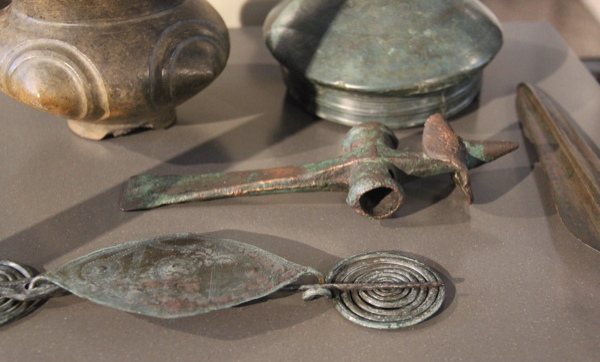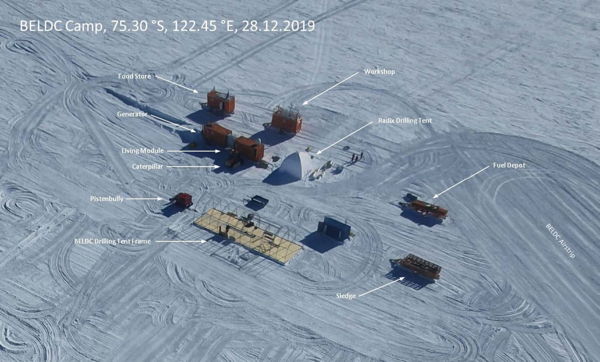Analytical Chemistry for Environment and Climate Change

The main activities of the laboratory relate to the development, optimization and validation of advanced analytical methods for the determination of organic and inorganic compounds produced by natural and anthropogenic sources, including those that can be used as climatic proxies in all the environmental, archaeological, cultural, climatic and food matrices. These techniques are used to:
- Study the local and global contamination as well as climate change;
- Study the transport mechanism of the pollutants;
- Paleoclimatic and paleoenvironmental reconstruction from ice cores, sediment cores and speleothems;
- Anthropogenic activity reconstruction during the Quaternary;
- Assessment of the impact of abiotic stress on the metabolismof plants;
- Study of the vegetative cycle and bioaccumulation processes.
- Carlo Barbante
- Dario Battistel
- Gabriele Capodaglio
- Matteo Feltracco
- Andrea Gambaro
- Mauro Masiol
- Rossano Piazza
- Marco Roman
- Barbara Stenni
- Giuseppa Toscano
Collaborators
- Mara Bortolini (PhD Student)
- Rachele Lodi (PhD Student)
- Beatrice Rosso (PhD Student)
Collaborations
- ISP-CNR
- University of Insubria
- University of Trieste
- Montana State University
- Universidad de Playa Ancha (Chile)
- Australian National University
- University of Amtwerp, USGS
- Universidad de Concepcion (Chile)
- University of Minnesota
- University of Manitoba
Publications
- M. Roman, D.B. McWethy, N.M. Kehrwald, E.O. Erhenhi, A.E. Myrbo, J.M. Ramirez-Aliaga, A. Pauchard, C. Turetta, C. Barbante, M. Prebble, E. Argiriadis, D. Battistel (2021) A multi-decadal geochemical record from Rano Aroi (Easter Island/Rapa Nui): Implications for the environment, climate and humans during the last two millennia. Quaternary Science Reviews, https://doi.org/10.1016/j.quascirev.2021.107115
- D. Segato, M.D.C. Villoslada Hidalgo,R. Edwards, E. Barbaro, P. Vallelonga, H.A. Kjaer, M. Simonsen, B. Vinther, N. Mafezzoli, R. Zangrando, C. Turetta, D. Battistel, O. Vesteinsson, C. Barbante, A. Spolaor (2021) Five thousand years of fire history in the high North Atlantic region: Natural variability and ancient human forcing, Climate of the Past, https://doi.org/10.5194/cp-17-1533-2021
- D. Battistel, N.M. Kehrwald, P. Zennaro, G. Pellegrino, E. Barbaro, R. Zangrando, X.X. Pedeli, C. Varin, A. Spolaor, P.T. Vallelonga, A. Gambaro, C. Barbante. (2018). High-latitude Southern Hemisphere fire history during the mid to late Holocene (6000–750 BP). Climates of the Past, 14: 871–886, https://doi.org/10.5194/cp-14-871-2018
- E. Argiriadis, D. Battistel, D.B. McWethy, M. Vecchiato, T. Kirchgeorg, N.M. Kehrwald, C. Whitlock, J.M. Wilmshurst, C. Barbante. (2018). Lake sediment fecal and biomass burning biomarkers provide direct evidence for prehistoric human-lit fires in New Zealand. Scientific Reports, 8: 12113. https://doi.org/10.1038/s41598-018-30606-3
- C. Sannino, L. Borruso, A. Mezzasoma, D. Battistel, L. Zucconi, L. Selbmann, M. Azzaro, S. Onofri, B. Turchetti, P. Buzzini, M. Guglielmin. (2020). Intra- and inter-cores fungal diversity suggests interconnection of different habitats in an Antarctic frozen lake (Boulder Clay, Northern Victoria Land). Environmental Microbiology, https://doi.org/10.1111/1462-2920.15117
Equipment
- PowerPREP
- ASE Dionex
Research projects

GEOarchaeology of DAily Practices: extracting bronze age lifeways from the domestic stratigraphic record
In contrast to large-scale narratives based on artifact that are, often prestige items from funerary contexts, this project focuses on the practices of daily domestic life, recorded in the sediments upon which it took place. These constitute the domestic stratigraphic record. This project, therefore, shifts the scale and the object of archaeological investigation, and aims at bringing interdisciplinary scientific analyses into dialogue with anthropological understandings of lifestylesand households. Its main objective is the formulation of an innovative narrative of the Bronze Age addressing social, economic, and environmental aspects of a culturally interconnected region of Europe. The daily practices and life histories of bronze age people will be the pixels of this new picture that challenges previous depersonalized narratives relying on material culture. The region between the Carpatho-Danubian basin, the Balkans, and northern Italy was selected due to its important cultural interactions during the Bronze Age. Ten key archaeological sites in six European countries constitute the project’s database. Its innovative interdisciplinary approach integrates geoarchaeology (micro-stratigraphic analysis), organic chemistry (biomarkers) and archaeo-botany (phytoliths, seeds, fruits, and charcoal) to reconstruct with unprecedented accuracy the daily practices from domestic stratigraphy. This information will be compared with the story told by material culture and integrated with local paleo-environmental records. The project, in fact, challenges previous reconstructions that called in environmental mega-events (volcanic eruptions, glacial advances, aridity events) to aprioristically explain broad cultural phenomena of the Bronze Age. Their inherent complexity can only be faced by crystallizing detailed micro-histories and site-specific environmental reconstructions into a broader synthesis based on hard scientific data.
Website: https://www.facebook.com/GEODAPuniPD

Beyond EPICA Oldest Ice Core: 1,5 Myr of greenhouse gas - climate feedbacks
The objectives of the European project Beyond EPICA Oldest Ice Core are:
- Obtain an Antarctic ice core that can reach the bedrock, capable of covering the mid-Pleistocene transition and beyond (1.5 million of years), where the climatic variability of the glacial/interglacial cycles changed between cycles of 40,000 and 100,000 years.
- Obtain a high-resolution CO2 record during a period older than 700,000 years.
- Use the new the climatic records that will be obtained to identify the causes of the above mentioned cycles and the long-term feedback between the carbon cycle and the climate.
The ideal drilling site has been identified thanks to the geophysical investigations at Little Dome C, about 40 km from the Italian-French station of Concordia Dome C (3233 m a.s.l.) on the East Antarctica plateau.
Website: https://www.beyondepica.eu/en/
Last update: 22/10/2024
